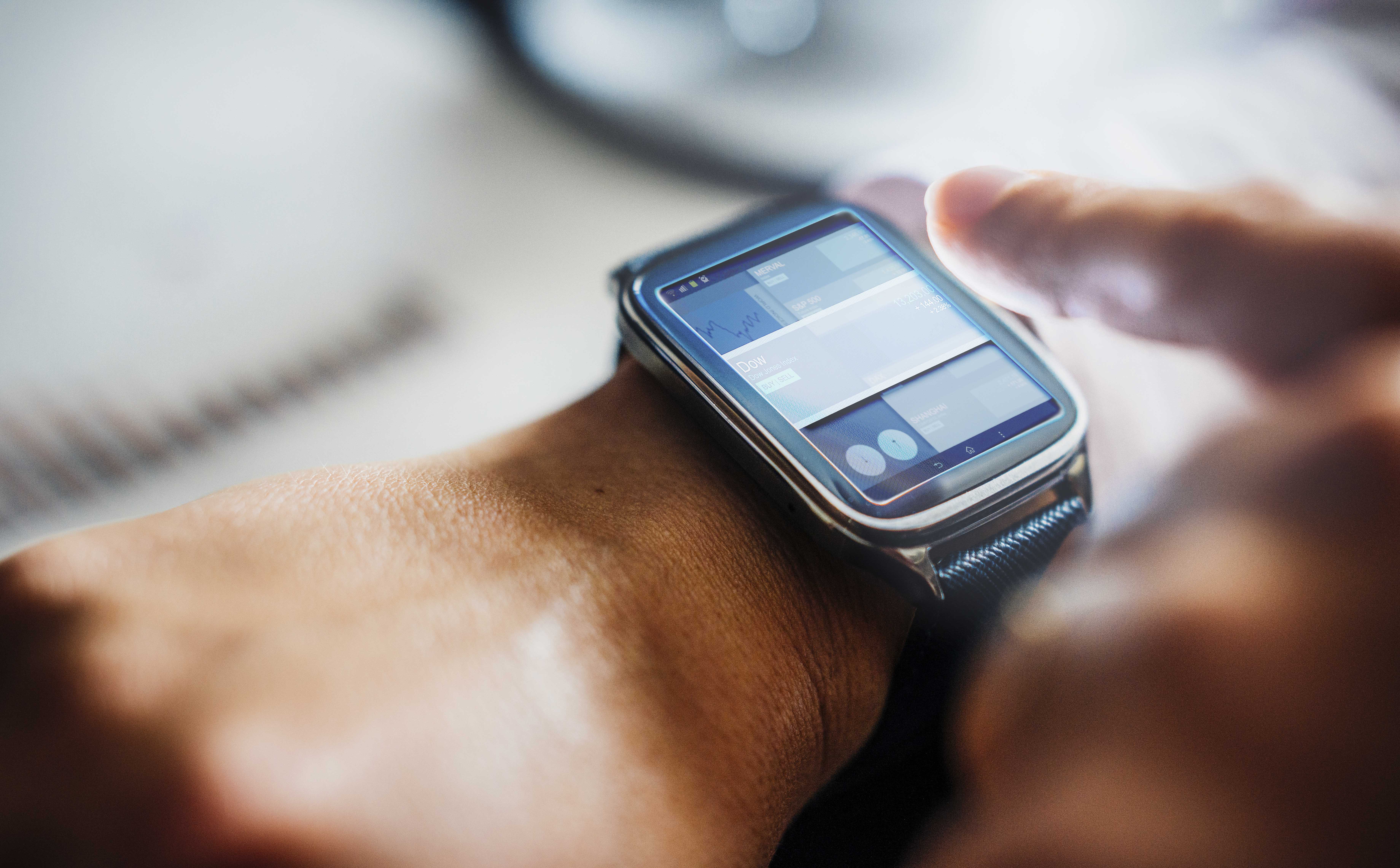Dual Perspectives on Digital Twins in Interception Science

In the 1800s, there were several ways to photograph a single image. As image capture was refined, people noticed that successive still photos – or data points – stacked one after another at 10 to 12 frames per second (FPS) could simulate motion.
The 1900s brought new advancements in technology – silent films at 16 to 24 FPS, followed by smooth motion video at 60 FPS – and today videos at up to 10 trillion frames per second. Over time, scientists and engineers determined that capturing images at high rates of speed could predict the next steps or short-term futures of complex systems.
Like filmmakers, doctors and scientists use individual data points to piece together a virtual representation of an individual’s health. But typically, a doctor collects biomarker and biometric data from a person every 12 months at his or her annual physical and pieces it together over the person’s lifetime. That’s like taking several single photographs and stacking them together to simulate motion – like filmmakers did in the 1800s.
Today, doctors and researchers have the opportunity to collect data from patients every millisecond of every day, rather than once a year, using sensors that already exist. Could this constant data collection and analysis help doctors predict where the person’s health is headed weeks, months or years in the future? That’s what Janssen’s scientists aim to find out.
Make Way for Digital Twins.
A 2017 article in Forbes magazine describes a digital twin as “a virtual model of a process, product or service” and a “bridge between the physical and digital world.” Though digital twins are used in multiple industries, they have particularly exciting potential in health care.
At Janssen, the mission of the World Without Disease Accelerator (WWDA) is to predict and preempt disease at its earliest stages. By creating digital twins of a person’s health prior to and through the onset of disease, we have the potential to identify the earliest predictors of disease incubation and progression. Achieving the necessary detail and breadth of data to create digital twins in health care requires the integration and analysis of traditional health care datasets, such as electronic medical records, with the continuous data available through advances in sensor technology and mobile devices.
In this discussion, Patrick Loerch, Ph.D., Global Head, Data Sciences & Prevention Biomarkers, WWDA and Richard Fougere, Vice President, R&D Consumer Health and Head, Sensors & Wearables, WWDA, tell us why they believe in the power and potential of digital twins in health care, and how their teams are uniquely positioned to work together to make this concept a reality.
Why do you believe in the potential of digital twins in health care, and what drove the WWDA to pursue this approach?
Patrick Loerch: For us, the emphasis of a digital twin, in the context of a world without disease, is the idea that we are pursuing diseases at their earliest stages. The individuals we are targeting are asymptomatic – those who walk into a doctor’s office and are identified as “healthy,” though they could be incubating cancer or another chronic disease. With digital twins, we may be able to avoid invasive blood samples and biosampling on “healthy” people, and still achieve the desired result of catching disease early. As Bill Hait, Global Head, Johnson & Johnson External Innovation, often says, “A hundred years from now, someone’s going to look back on us and say, ‘Can you believe they waited until you got a disease, and then did something?’”
Richard Fougere: If you had asked me five or ten years ago, I may not have believed in this concept, because the capabilities we have today simply did not exist. Today, I am confident that the creation of digital twins is possible due to the increased accuracy we’re seeing with sensors, coupled with our growing ability to measure data in real time in a passive, noninvasive way, for incorporation into algorithms.
Can you share an example of how your teams work together on digital twins?
RF: As an example, in certain diseases, at-risk individuals may have biomarkers in their body fluids that indicate they have a higher probability of developing a disease, even if the person looks and feels “healthy,” as Patrick mentioned. My team could then work to develop a sensor or wearable – one that is noninvasive and doesn’t interfere with day-to-day life – to track an individual’s body fluids over a period of time, looking for the biomarkers in question. Whereas traditional medical records or lab tests only take a snapshot at a single point in time, sensor-based biomarkers are able to detect in real-time, whether or not this person is likely to be on a path towards developing the disease. This technology allows us to more precisely define the window of time where we can intervene and either delay disease progression or halt its development. To date, we’ve been able to prove the clinical significance of a number of our sensors already.
PL: That’s where my Data Sciences & Prevention Biomarkers team comes in. We implement secure data capture and integration systems and design the algorithms that iteratively learn from the sensors Rick’s team developed. We integrate the sensor data with various data sources relevant to the specific disease, ideally over a long period of time. By integrating diverse data on the same individuals, we’re able to develop an increasingly accurate digital twin of a cohort of patients, from which we aim to detect or prevent disease.
Why is Janssen and the WWDA well-positioned to carry the concept of digital twins forward to meet the increasing demands of innovation in health care?
RF: Thinking broadly, Janssen is a part of J&J, meaning we’re a consumer, a medical device, and a pharmaceutical company. The WWDA is dedicated to transforming consumer health and to developing novel solutions that will truly improve human health. In my experience with other companies, access to expertise sometimes came at a significant cost, if at all. But within J&J, we are uniquely positioned to carry out a cross-sector approach to digital twins, with phenomenal expertise across the enterprise. Moreover, through the external data-focused collaborations that Patrick’s team has established, we’re able to conduct better analyses and train our algorithms more successfully, bringing us closer to making our vision a reality.

PL: I would definitely reiterate that perspective. When we think about the concept of preventing and intercepting disease, the majority of the people we are looking to engage have had little to no interaction with the health care system because they’re not yet “sick.” That’s where it’s helpful to have a hybrid science and health consumer segment – one that understands the underlying biology. Being a multi-sector, global health care organization, we are able to focus on human health as a whole and look to identify the appropriate intervention for a given disease – a solution which may be delivered in many forms – a therapeutic, a device, a nutraceutical or a digital app.
What motivates you both in leading this unique approach?
PL: Earlier in my career, I worked to develop CAR-T cell therapies for late-stage multiple myeloma. While this work was very meaningful to me and certainly important to those people with late-stage cancers, it’s exciting to now be working from the other end. I’ve shifted my focus from treating disease to reversing disease development and preventing it altogether. The possibility of achieving this is extremely motivating to me, and I have a personal connection to this goal. The concept of digital twins, along with the rest of the work the WWDA is doing, could help us make a world without disease a reality.
RF: Imagine having the ability to effortlessly tap into your own daily routine, sometimes 2-3 times per day, and in doing so be positioned to guide yourself through an effective health intervention strategy – stopping disease before it starts – through an understanding of your data. Humans have the theoretical biological potential to live between 130-150 years, yet the average life expectancy is so much lower because of disease. That’s what motivates me. It’s the possibility of helping people live longer, healthier, and happier lives.




